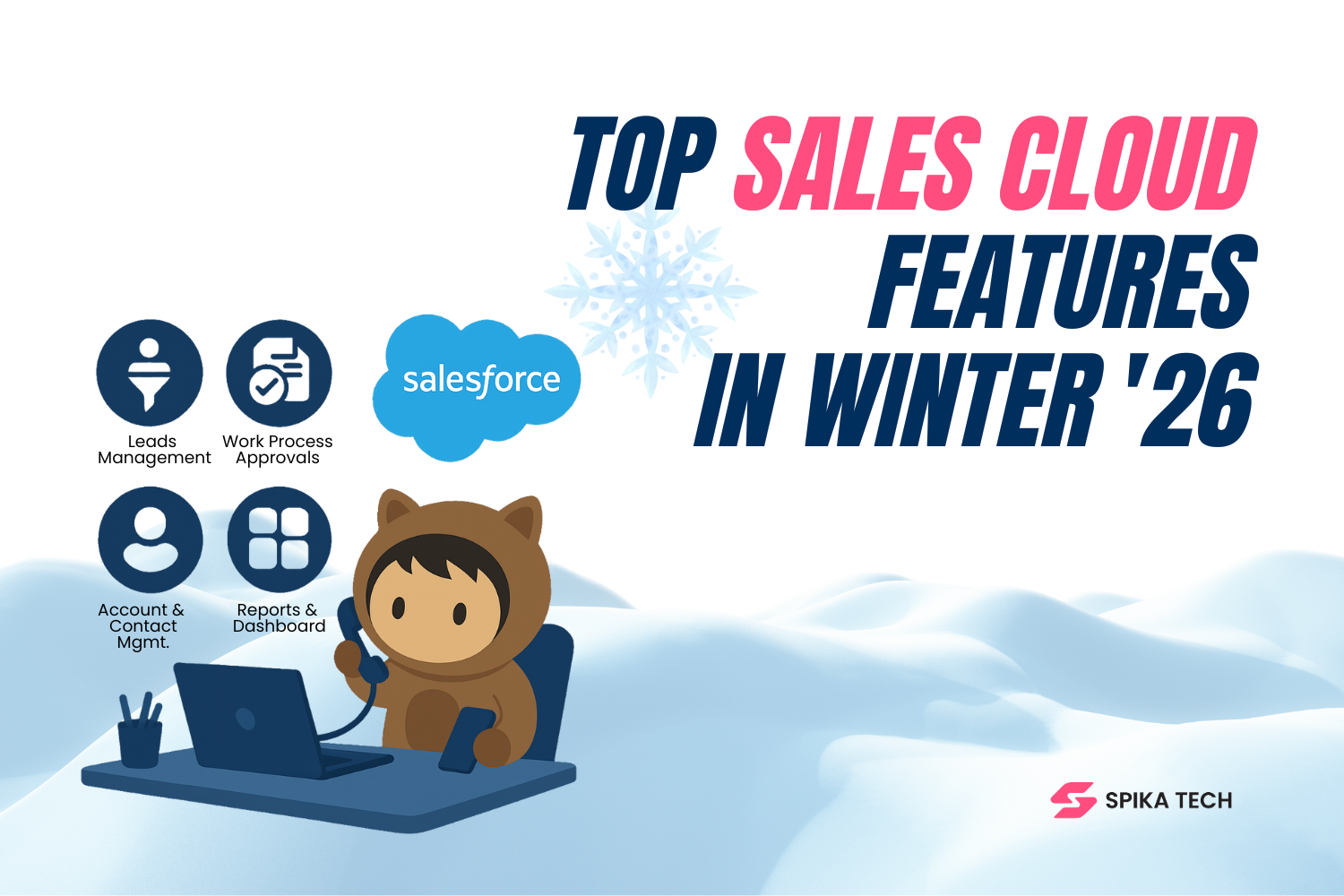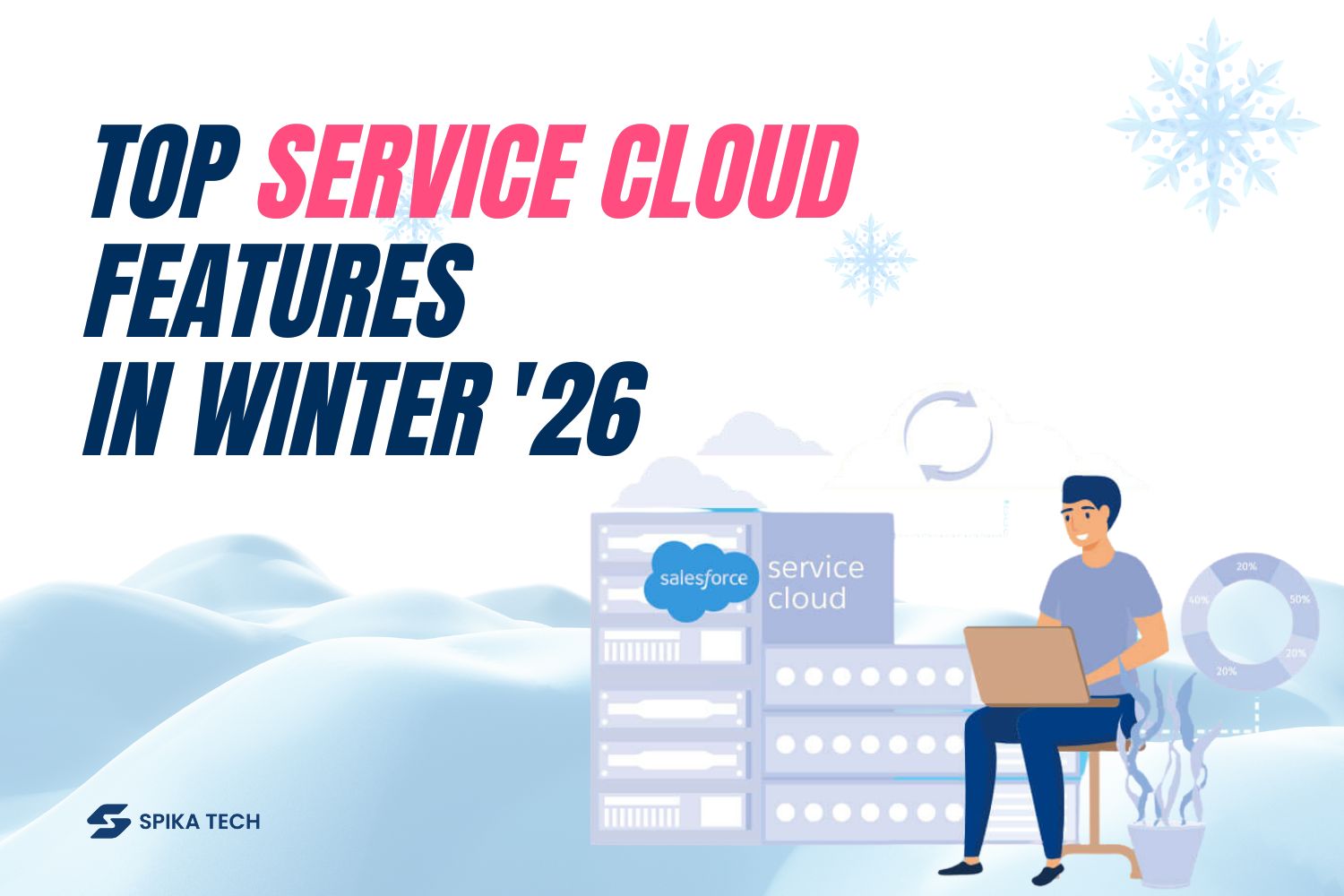Building a house without a fixed blueprint means adding rooms and features as needs evolve. You might start with a kitchen, but after using the space, you realize a larger dining area or an extra bedroom is necessary. This flexibility ensures the house grows with you. Agile works the same way for CRM projects, allowing businesses to adapt and refine their systems over time rather than following a rigid plan that may not fit real-world demands.
Customer Relationship Management (CRM) systems are the backbone of many businesses. They help companies track customer interactions, improve communication, and automate workflows. But implementing a CRM isn’t a one-size-fits-all process. A business might think they need a simple customer database, only to realize later that they need advanced reporting, AI-driven automation, or better integration with other tools. That’s where Agile methodology comes in.
Agile is a project management approach that breaks down large projects into smaller, manageable phases. Instead of spending months (or even years) planning, building, and launching a CRM all at once, Agile allows businesses to develop and test features in short cycles, called sprints. This means teams can gather feedback, make improvements, and pivot when necessary, ensuring the final product is useful for the people who need it.
Many traditional CRM projects fail because they rely on outdated methods like the Waterfall approach, where everything is planned upfront with little room for adjustments. By the time the CRM is fully developed, business needs may have changed, leading to wasted time, money, and effort. Agile eliminates this problem by ensuring constant collaboration, real-time feedback, and continuous improvements.
Whether you’re a small business looking to streamline customer interactions or a large enterprise managing complex sales pipelines, Agile can make CRM implementation smoother, faster, and more effective. In this article, we’ll explore why Agile is the best fit for CRM projects, how it works in practice, and the key benefits it brings to businesses.
Section 1: Why Agile Is the Best Fit for CRM Projects
Imagine planning a cross-country road trip without any stops to check your route. You might realize too late that you’ve taken a wrong turn or missed an important landmark. This is what happens when businesses use rigid project management methods for CRM projects—they risk spending months or even years on development, only to find that the system doesn’t meet their needs.
Agile methodology prevents this by allowing teams to make adjustments along the way. This flexibility is crucial for CRM projects, which often involve multiple departments, evolving customer expectations, and continuous technology updates.
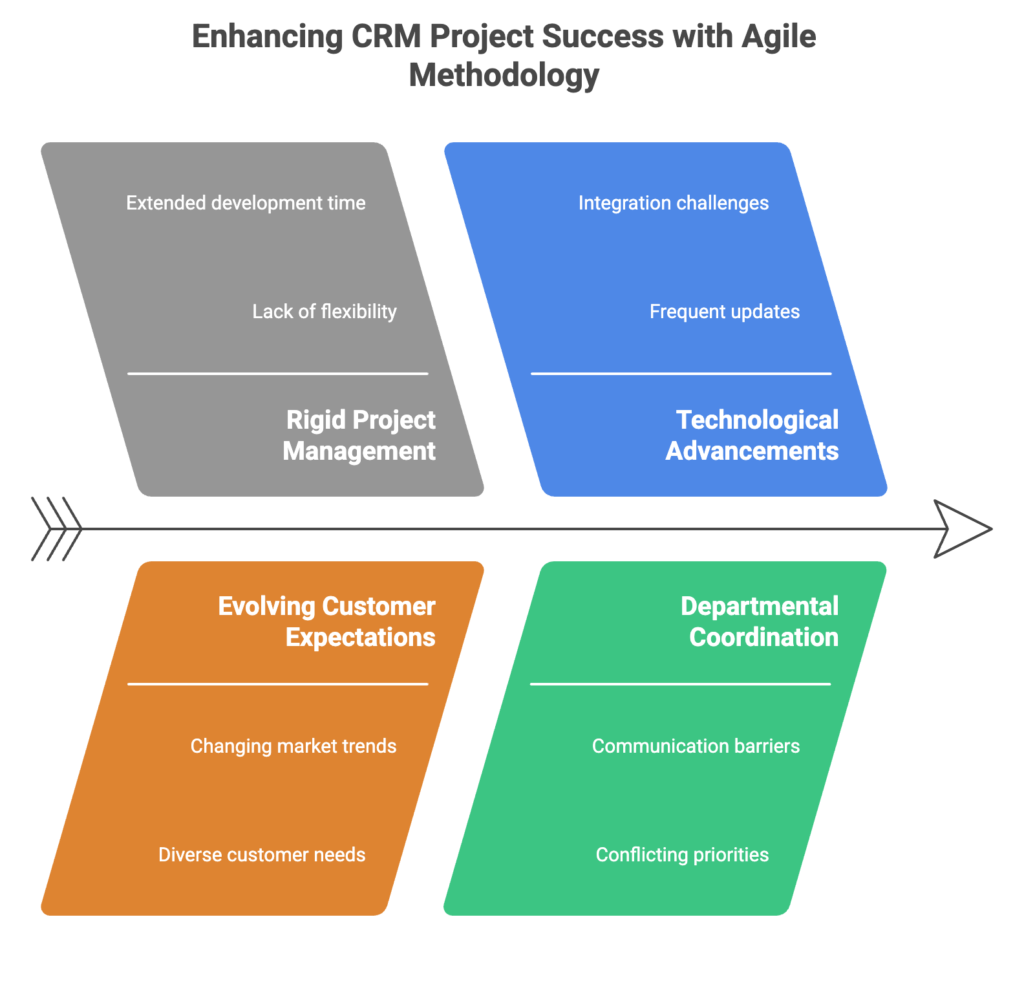
CRM Projects Are Complex and Ever-Changing
CRM systems do more than just store customer contact information. They track interactions, automate workflows, analyze customer data, and integrate with multiple platforms. Businesses often find that their needs change as they implement these systems—what seemed like a great idea at the beginning might not work as expected in real life.
With Agile, teams can break the project into small, manageable steps. Instead of waiting months for a “perfect” CRM, they develop and test features as they go, making improvements based on real user feedback. A retail company implementing a CRM, for example, might initially focus on managing customer inquiries. But after launch, they might realize they also need better reporting tools. With Agile, they can quickly adapt, adding new features based on actual usage.
Faster Results, Less Risk
Traditional project management methods, like the Waterfall approach, require a step-by-step process—planning, development, testing, and launch. The problem? If an issue arises late in the process, fixing it is expensive and time-consuming. Agile reduces this risk by delivering a working CRM in phases. Each phase (or “sprint”) focuses on small but functional improvements, allowing teams to catch problems early.
According to a study by McKinsey & Company, Agile projects are 1.5 times more likely to be successful than traditional projects, reducing failure rates and saving businesses money.
Encourages Cross-Team Collaboration
Another advantage of Agile is that it encourages teamwork. CRM projects often involve multiple departments—sales, marketing, customer service, and IT. In a traditional setup, miscommunication between teams can lead to delays and misunderstandings. Agile encourages frequent check-ins, like daily standups and sprint reviews, to keep everyone on the same page.
Think of a CRM project like a relay race. If one runner doesn’t know when to pass the baton, the whole team slows down. Agile ensures constant communication so no one drops the baton.
Delivers a CRM That Works for the People Using It
Perhaps the most important benefit of Agile is that it delivers a CRM that works for the people using it. One of the biggest reasons CRM projects fail is that they don’t align with how employees actually work. Agile focuses on gathering user feedback throughout the process, making sure the system is useful and user-friendly before final deployment.
Salesforce, one of the world’s biggest CRM platforms, adopts Agile principles internally to ensure their own teams can quickly adapt to changing customer needs. This approach has helped them continuously improve their products without major disruptions.
By using Agile methodology, businesses build CRM systems that evolve with them, rather than forcing them into rigid, outdated structures. With the ability to adapt, collaborate, and continuously improve, Agile ensures CRM projects are not just completed—but truly successful.
Section 2: How Agile Works in CRM Implementation
Assembling a puzzle works best when you start with the edges, build small sections, and adjust as needed. Agile follows the same approach in CRM projects—businesses implement features in stages, test them, and refine them based on real-world feedback. This method ensures that CRM systems evolve to meet actual business needs rather than relying on early assumptions.
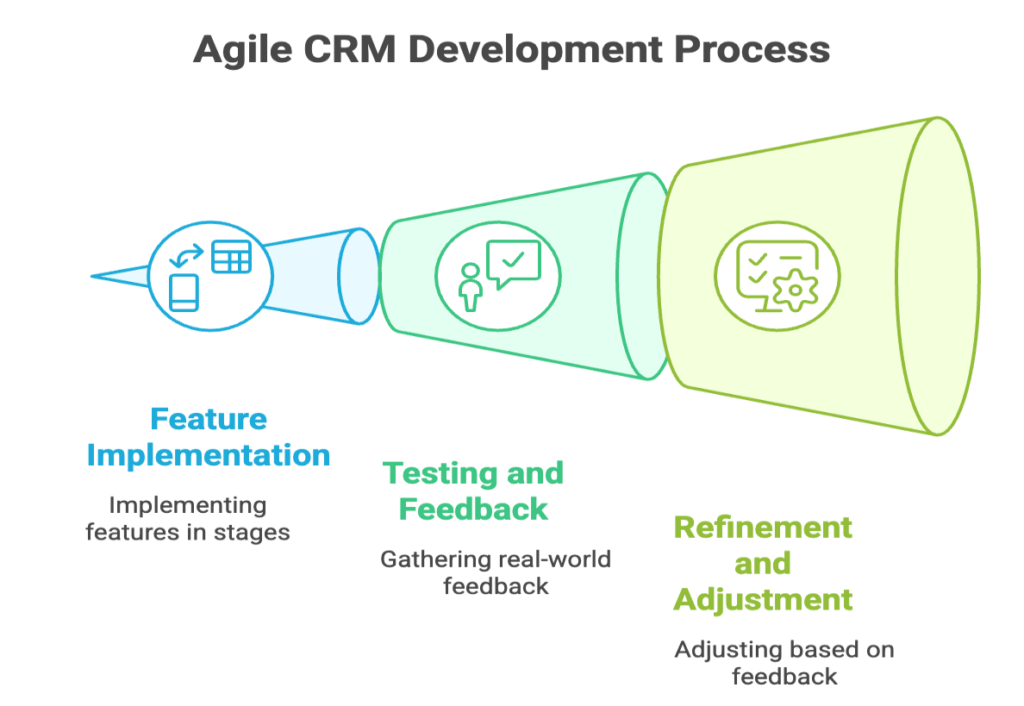
Breaking CRM Implementation into Sprints
In Agile, projects are divided into short development cycles called sprints, usually lasting two to four weeks. Each sprint focuses on delivering a small but functional part of the CRM system. This approach allows teams to test, adjust, and add new features over time instead of waiting months for a final product.
For example, a company implementing a CRM might follow this sprint process:
- Sprint 1: Set up a basic customer database and contact management.
- Sprint 2: Add automation for follow-up emails.
- Sprint 3: Integrate sales tracking and reporting.
- Sprint 4: Improve user experience based on employee feedback.
By the end of each sprint, the team has a working version of the CRM with new features that employees can start using right away. If any issues arise or business priorities shift, the team can adapt in the next sprint.
The Role of Continuous Feedback
Agile thrives on collaboration and feedback. Unlike traditional project management, where customers and employees see the finished CRM only after months of development, Agile keeps them involved throughout the process. Regular check-ins, demos, and testing sessions ensure the CRM evolves based on real needs rather than assumptions.
For instance, if sales teams find that a new lead management feature isn’t as user-friendly as expected, developers can tweak it in the next sprint instead of waiting until the entire system is finished. This prevents costly mistakes and ensures that the final CRM is both functional and easy to use.
Collaboration Across Teams
CRM systems impact multiple departments—sales, marketing, customer support, and IT all rely on them to manage customer interactions. Agile encourages cross-team collaboration by holding daily stand-up meetings and sprint reviews, ensuring that everyone stays aligned on goals and progress.
Picture a restaurant kitchen where the chefs, waitstaff, and managers constantly communicate to keep service running smoothly. If an order is delayed or a dish needs adjustment, they work together to fix it immediately. Agile works the same way, keeping teams connected so issues can be addressed before they become major roadblocks.
Adapting to Business Growth and Changes
One of the biggest advantages of Agile is its flexibility. Business needs often change—customer preferences shift, new competitors emerge, or internal priorities evolve. With Agile, CRM implementation isn’t locked into a rigid plan. Instead, teams can adjust and scale the system over time to fit new challenges.
For example, an e-commerce business using Agile to implement a CRM might initially focus on customer service automation. Later, they might realize they need better analytics to track customer buying patterns. Because Agile allows for continuous updates, they can add new features without overhauling the entire system.
Real-World Example: Spotify’s Agile Approach to CRM
Spotify, the music streaming giant, applies Agile principles to its customer relationship management processes. The company uses small, autonomous teams called “squads” to continuously refine its user engagement strategies. By analyzing data and testing different approaches in short cycles, Spotify ensures its CRM system evolves alongside user behavior. This has helped the company personalize recommendations, improve customer retention, and optimize user experience over time.
By applying Agile principles to CRM projects, businesses can create systems that are more adaptable, user-friendly, and aligned with real-world needs. In the next section, we’ll explore the key benefits of using Agile for CRM projects and why it leads to better long-term success.
Section 3: Key Benefits of Using Agile for CRM Projects
Think of CRM implementation like training for a marathon. You wouldn’t wait until race day to see if your strategy works—you’d train in small, manageable steps, adjusting your plan along the way. Agile applies the same idea to CRM projects, helping businesses gradually build a system that fits their needs while making real-time improvements.
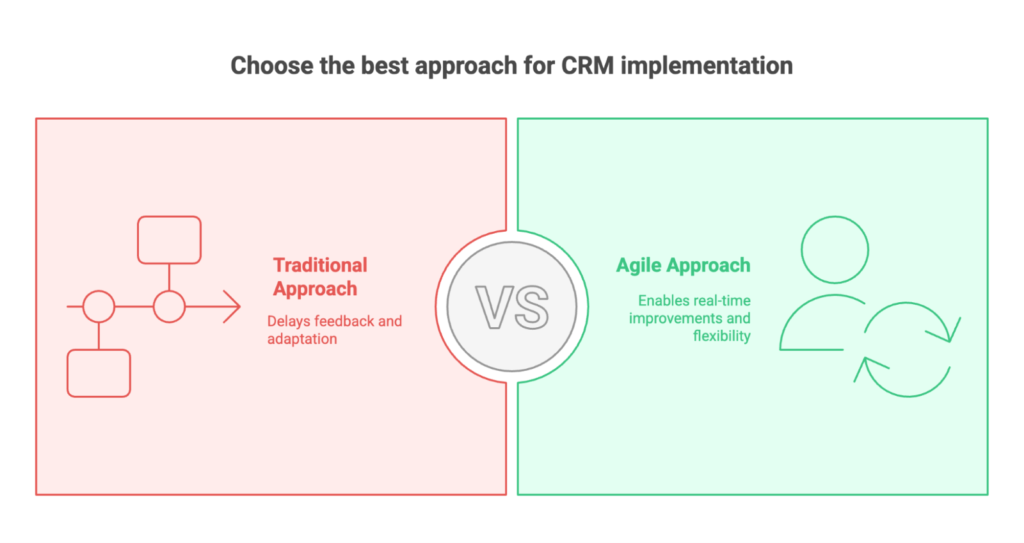
Faster Implementation, Quicker Results
Traditional project management methods often require months (or even years) of planning, building, and launching before a CRM system is ready. By the time it’s finished, business needs may have changed, forcing costly modifications. Agile eliminates this risk by delivering a working product in phases.
Since Agile breaks CRM development into short sprints, teams can start using core features early on. This means businesses see results faster—whether it’s automating emails, streamlining customer inquiries, or tracking sales performance. Plus, early feedback ensures that each feature is refined before the next sprint begins.
A study by PwC found that Agile projects are 28% more successful than traditional ones, largely because they adapt to real-time needs rather than following a fixed, outdated plan.
Better Adaptability to Business Changes
Business priorities shift constantly—market trends evolve, customer expectations change, and new competitors emerge. A rigid CRM system that was designed based on last year’s needs may no longer be relevant today. Agile ensures companies can pivot as needed, making adjustments without overhauling the entire system.
For example, a retail company might initially implement a CRM to manage customer support tickets. After a few months, they may realize they need better data analytics to track buying patterns. Agile allows them to add this functionality in a future sprint without disrupting existing operations.
Higher User Satisfaction and Adoption Rates
One of the biggest challenges with CRM projects is getting employees to actually use the system. If a CRM is too complex or doesn’t align with how teams work, adoption rates plummet, and the investment goes to waste.
Agile solves this by involving users throughout the development process. Employees provide input, test features, and suggest improvements in real time. Instead of handing them a completed system and hoping they like it, Agile ensures the CRM is designed with their needs in mind from the start.
Consider how Salesforce, a leader in CRM solutions, applies Agile principles internally. They continuously gather user feedback, update features in small increments, and ensure that their CRM tools evolve alongside business needs. This approach has helped them maintain high user adoption and satisfaction rates.
Encourages Cross-Department Collaboration
CRM systems touch multiple parts of a business—sales, marketing, customer support, IT, and management all rely on them. Without proper coordination, miscommunication can slow down implementation, create conflicts, and lead to a CRM that doesn’t work for everyone.
Agile fosters collaboration by bringing different departments together. Daily stand-ups, sprint reviews, and shared progress tracking keep everyone aligned. Think of it like a well-coordinated orchestra—each musician (or team) plays their part, but they continuously adjust to ensure they’re in sync.
Reduced Project Risks and Costs
Because Agile delivers results in smaller increments, it minimizes the risk of failure. If a feature isn’t working as expected, teams can catch and fix it early—before it becomes a costly mistake.
Traditional CRM projects often involve large budgets upfront, with no guarantee that the final system will meet business needs. Agile, on the other hand, allows companies to invest in phases, ensuring that each step delivers real value before proceeding. This controlled, iterative approach significantly reduces wasted time and money.
A report from the Standish Group found that Agile projects have a 64% success rate compared to only 49% for traditional projects. The reason? Agile minimizes risk by focusing on continuous improvements rather than a rigid, all-or-nothing approach.
Real-World Example: IBM’s Agile CRM Implementation
IBM adopted Agile to overhaul its internal CRM system, which was initially plagued by long development cycles and low user adoption. By shifting to an Agile approach, the company broke the project into smaller phases, allowing teams to test features and adjust based on real feedback. As a result, IBM significantly reduced development time and improved CRM usability, leading to higher adoption rates across departments.
Agile’s flexibility, speed, and focus on user satisfaction make it the ideal approach for CRM projects. In the next section, we’ll explore best practices for implementing Agile successfully and ensuring long-term success.
Section 4: Best Practices for Successfully Implementing Agile in CRM Projects
Adopting Agile for a CRM project is like learning to cook a complex dish—you need the right ingredients, a step-by-step process, and the flexibility to adjust as you go. When done correctly, Agile ensures a smooth CRM implementation that meets business needs and evolves with time. Here are key best practices to ensure success.
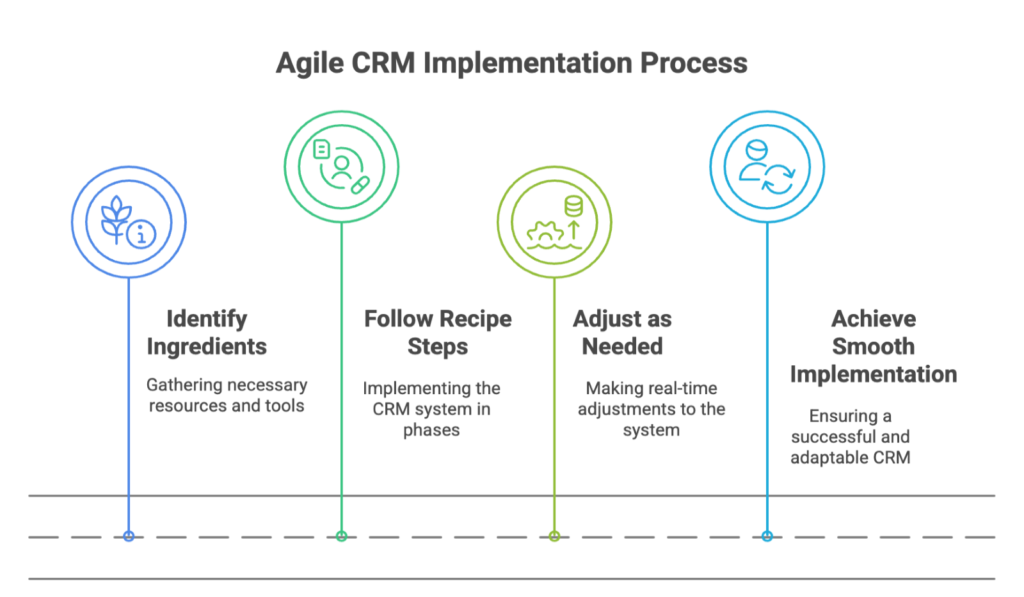
Start Small and Scale Gradually
Jumping into a full-scale CRM overhaul can be overwhelming, just like trying to cook a five-course meal on your first attempt. Instead, businesses should start with a small pilot project, focusing on high-priority CRM features before expanding.
For example, a company might first implement basic customer data tracking and automate follow-up emails. Once those features work well, they can move on to integrating sales analytics or marketing automation. This phased approach prevents bottlenecks and allows teams to fine-tune features along the way.
Keep Communication Open Across Teams
Agile thrives on collaboration. Since CRM systems impact multiple departments—sales, marketing, customer service, and IT—everyone needs to be involved in the development process. Regular check-ins, daily stand-up meetings, and sprint reviews ensure that feedback is incorporated, and no department is left out.
A great example is how HubSpot, a leading CRM provider, applies Agile internally. Their teams work in small, cross-functional groups, holding frequent meetings to ensure alignment and continuous improvement. This collaborative approach has helped them consistently refine their CRM tools based on real user needs.
Prioritize User Feedback Throughout Development
A CRM is only useful if employees actually use it. One of the biggest reasons CRM projects fail is that the final system doesn’t match what employees need. Agile solves this by involving end-users—sales reps, marketers, and customer support teams—throughout the process.
For example, after launching an initial CRM feature, businesses should gather employee feedback on usability, functionality, and potential improvements. Adjustments can then be made in the next sprint to ensure the system is user-friendly and efficient.
Use Agile Tools to Track Progress
Agile CRM projects require continuous tracking and adjustments. Businesses can use Agile project management tools like Jira, Trello, or Monday.com to manage sprints, assign tasks, and monitor progress. These tools help teams stay organized and ensure that no critical feature is overlooked.
Measure Success with Key Metrics
Implementing Agile doesn’t stop once the CRM is in place. Businesses should regularly track performance metrics to assess whether the CRM is meeting goals. Some key indicators include:
- User Adoption Rate: Are employees actively using the CRM?
- Customer Satisfaction Scores: Has the CRM improved customer interactions?
- Sales Performance: Is the system helping sales teams close more deals?
- Response Time: Has customer service efficiency improved?
By continuously monitoring these metrics, businesses can refine their CRM system and maximize its value.
Real-World Example: Microsoft’s Agile CRM Strategy
Microsoft uses Agile principles to enhance its CRM solutions, such as Dynamics 365. By applying Agile methodologies, they continuously update and refine features based on customer feedback. This iterative process ensures that their CRM system remains adaptable, user-friendly, and aligned with evolving business needs.
Conclusion: Why Agile is a Game-Changer for CRM Projects
Implementing a CRM system is like setting up the foundation for a house—it needs to be strong, adaptable, and built to support future growth. Agile methodology ensures that CRM projects are not just functional but also continuously evolving to meet changing business needs.
By adopting Agile, businesses can develop and refine their CRM systems in small, manageable phases, reducing risks and increasing efficiency. The flexibility of Agile allows teams to adapt quickly, ensuring that the CRM stays aligned with real-world demands. More importantly, involving end-users throughout the process boosts adoption rates and ensures that the system genuinely enhances daily workflows.
Companies like Microsoft, Salesforce, and IBM have proven that Agile is not just a trend—it’s a strategic advantage. Businesses that embrace Agile for CRM projects gain faster implementation, better collaboration, and a system that grows alongside their needs.
The key takeaway? A CRM should work for your business, not the other way around. With Agile, you’re not locked into a rigid system; you’re building a dynamic tool that continuously improves, helping your team deliver better customer experiences and drive long-term success.


